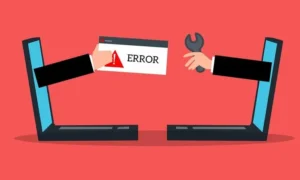Smoothstack Lawsuit: Unveiling the Truth Behind the Legal Disputes
SEO Meta-Description: Discover the details behind the Smoothstack lawsuit, the accusations, legal proceedings, and implications for the tech talent industry. Learn more about what led to the lawsuit and its impact on the parties involved.
Introduction
The tech industry has been rife with various legal disputes, and one such case that has garnered significant attention is the Smoothstack lawsuit. This article delves into the intricacies of the lawsuit, exploring the allegations, legal processes, and potential outcomes. Whether you are a tech enthusiast, a professional in the industry, or simply curious about corporate legal battles, this comprehensive guide will provide you with all the necessary details.
Background of Smoothstack
History and Mission
Smoothstack was founded with the mission to bridge the gap between tech talent and industry needs. The company aims to provide robust training and employment opportunities for budding IT professionals, ensuring that businesses have access to skilled and job-ready talent.
Company Structure
The company’s structure includes various departments focused on training, talent acquisition, and client services. Smoothstack operates with a streamlined hierarchy to facilitate efficient decision-making and responsiveness to market demands.
Services Offered
Smoothstack offers a range of services, including intensive training programs for aspiring IT professionals, staffing solutions for tech companies, and ongoing support for both trainees and employers. Their programs are designed to equip individuals with the necessary skills to thrive in the competitive tech landscape.
Nature of the Lawsuit
Initial Allegations
The lawsuit against Smoothstack began with allegations of unethical business practices and breach of contract. Former trainees and employees claimed that the company did not fulfill its promises regarding job placements and training quality.
Legal Grounds
The legal grounds for the lawsuit include breach of contract, misrepresentation, and violations of employment laws. Plaintiffs argue that Smoothstack engaged in deceptive practices that caused financial and professional harm to the trainees.
Key Parties Involved
The key parties involved in the lawsuit are former trainees and employees of Smoothstack, represented by a legal team specializing in employment law. Smoothstack, on the other hand, is represented by a corporate law firm with a history of defending companies in similar disputes.
Timeline of Events
Pre-Lawsuit Events
Prior to the lawsuit, there were growing concerns among trainees about the quality of the training programs and the company’s ability to secure job placements as promised. These concerns eventually led to formal complaints and legal action.
Filing the Lawsuit
The lawsuit was officially filed in [Year], marking the beginning of a legal battle that would attract significant attention from the media and industry observers.
Major Developments
Throughout the course of the lawsuit, there have been several major developments, including court hearings, witness testimonies, and interim judicial decisions that have shaped the trajectory of the case.
Legal Framework
Relevant Laws and Regulations
The lawsuit is being adjudicated under several key laws and regulations, including employment law, contract law, and consumer protection statutes. These legal frameworks provide the basis for the plaintiffs’ claims and the court’s jurisdiction.
Jurisdiction Issues
Jurisdictional issues have also played a role in the lawsuit, with debates over the appropriate legal venue and the applicability of state versus federal laws.
Legal Precedents
Legal precedents from similar cases have been cited by both the plaintiffs and the defendants to bolster their arguments. These precedents provide a context for understanding the potential outcomes of the lawsuit.
Plaintiff’s Perspective
Claims and Arguments
The plaintiffs claim that Smoothstack misrepresented the quality and outcomes of its training programs, leading to financial losses and career setbacks. They argue that the company failed to deliver on its contractual obligations.
Evidence Presented
Evidence presented by the plaintiffs includes testimonies from former trainees, internal communications from Smoothstack, and expert analyses of the training programs. This evidence aims to demonstrate a pattern of deceptive practices.
Legal Representation
The plaintiffs are represented by a legal team with expertise in employment law and a track record of successfully litigating similar cases. Their strategy focuses on highlighting the discrepancies between Smoothstack’s promises and the actual outcomes experienced by trainees.
Defendant’s Perspective
Defense Strategies
Smoothstack’s defense strategies include challenging the validity of the plaintiffs’ claims, presenting evidence of compliance with contractual obligations, and arguing that any shortcomings were due to external factors beyond the company’s control.
Counterarguments
The defense has countered the plaintiffs’ allegations by presenting testimonies from satisfied trainees, showcasing successful job placements, and highlighting the company’s overall positive impact on the tech industry.
Evidence Submitted
Evidence submitted by Smoothstack includes documentation of training programs, success stories from trainees, and expert testimonies attesting to the company’s adherence to industry standards.
Court Proceedings
Key Hearings
Key hearings in the lawsuit have included preliminary motions, evidentiary hearings, and arguments over jurisdictional issues. These hearings have been critical in shaping the direction of the case.
Witness Testimonies
Witness testimonies have played a pivotal role in the court proceedings, with both sides presenting witnesses to support their arguments. These testimonies provide firsthand accounts of the experiences and practices at Smoothstack.
Judicial Decisions
Judicial decisions on interim motions and procedural issues have provided insights into the court’s perspective on the case. These decisions have influenced the strategies of both the plaintiffs and the defendants.
Media Coverage
Public Reaction
The public reaction to the Smoothstack lawsuit has been mixed, with some expressing support for the plaintiffs and others defending the company. Social media and online forums have been abuzz with discussions about the case.
Media Narratives
Media narratives have varied, with some outlets focusing on the alleged unethical practices of Smoothstack and others highlighting the company’s contributions to the tech industry. The media coverage has influenced public opinion and awareness of the case.
Impact on Company Reputation
The lawsuit has had a significant impact on Smoothstack’s reputation, with potential implications for its business operations and client relationships. The company has faced increased scrutiny from both the public and industry regulators.
Expert Opinions
Legal Experts’ Views
Legal experts have weighed in on the lawsuit, offering analyses of the legal arguments and potential outcomes. These experts provide valuable insights into the strengths and weaknesses of both sides’ cases.
Industry Analysts’ Insights
Industry analysts have also provided their perspectives on the lawsuit, discussing its potential impact on the tech talent market and the broader industry. Their insights help contextualize the case within industry trends.
Predictions for the Outcome
Predictions for the outcome of the lawsuit vary, with some experts forecasting a settlement and others anticipating a protracted legal battle. These predictions are based on the evidence presented and the legal precedents cited.
Implications for the Tech Industry
Industry Standards
The Smoothstack lawsuit raises important questions about industry standards for training programs and employment practices. The outcome of the case could lead to changes in how companies in the tech sector operate.
Employee Rights
The case also highlights issues related to employee rights and protections, particularly for trainees and entry-level employees. The lawsuit underscores the importance of transparency and fairness in employment practices.
Future Legal Trends
The lawsuit may set precedents for future legal disputes in the tech industry, influencing how similar cases are litigated and resolved. The legal trends emerging from this case could shape the landscape for tech companies and their employees.
Potential Outcomes
Possible Resolutions
Possible resolutions to the lawsuit include a settlement between the parties, a court ruling in favor of the plaintiffs, or a dismissal of the case. Each outcome has different implications













Post Comment